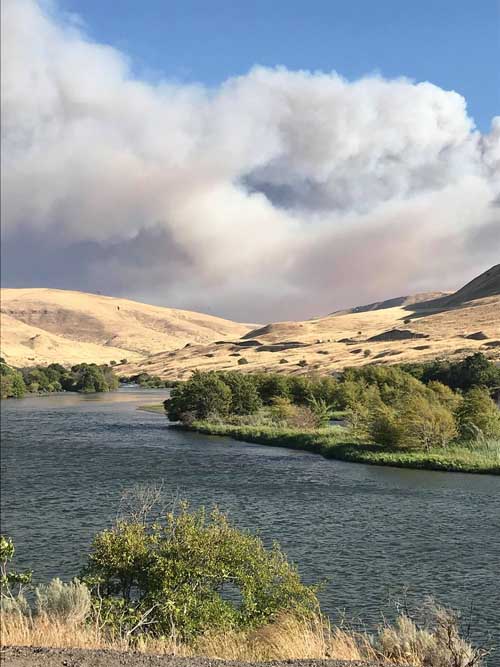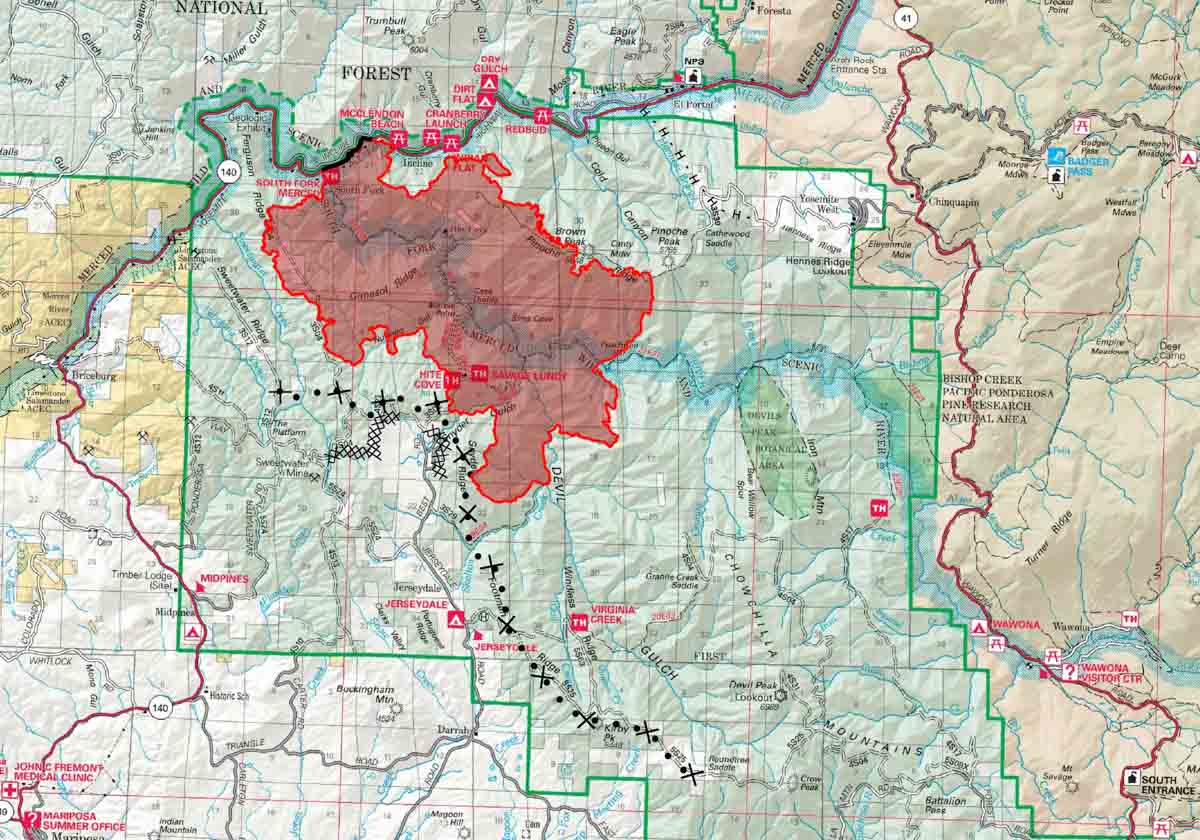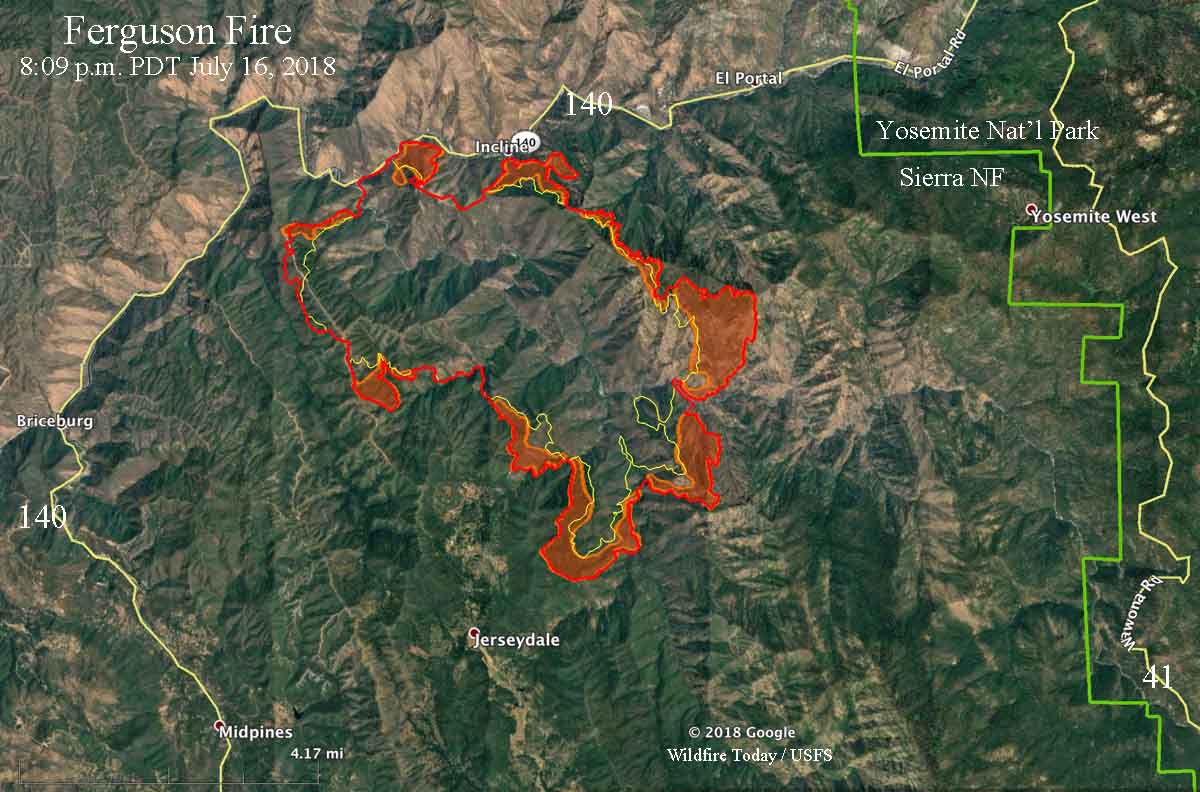Above: Substation Fire. Incident Management Team photo, July 18, 2018.
(Originally published at 6:33 a.m. PDT July 19, 2018)
Since the Substation Fire started July 17 southeast of The Dalles, Oregon it has claimed the life of one person and burned over 50,000 acres. The fire has blackened an area approximately 18 miles long by 8 miles wide, and has jumped the Lower Deschutes River in at least two places.
The Wasco County Sheriff’s Office reported that at 1:30 p.m. on July 18 deputies answered a call about a burnt tractor. They found the operator a short distance away, deceased, apparently killed by exposure to the fire. The operator may have been attempting to suppress the fire by using the tractor and disk to construct a fireline. The release of the person’s name is pending notification of next of kin.
The Sheriff’s Office has the most current information about the areas under evacuation orders. They have boats patrolling the river to notify hikers and boaters.
Officials have closed Highway 97 from Biggs Junction to Highway 197.
The Governor declared the fire a conflagration Wednesday, which allows the state fire marshal to mobilize firefighting resources.
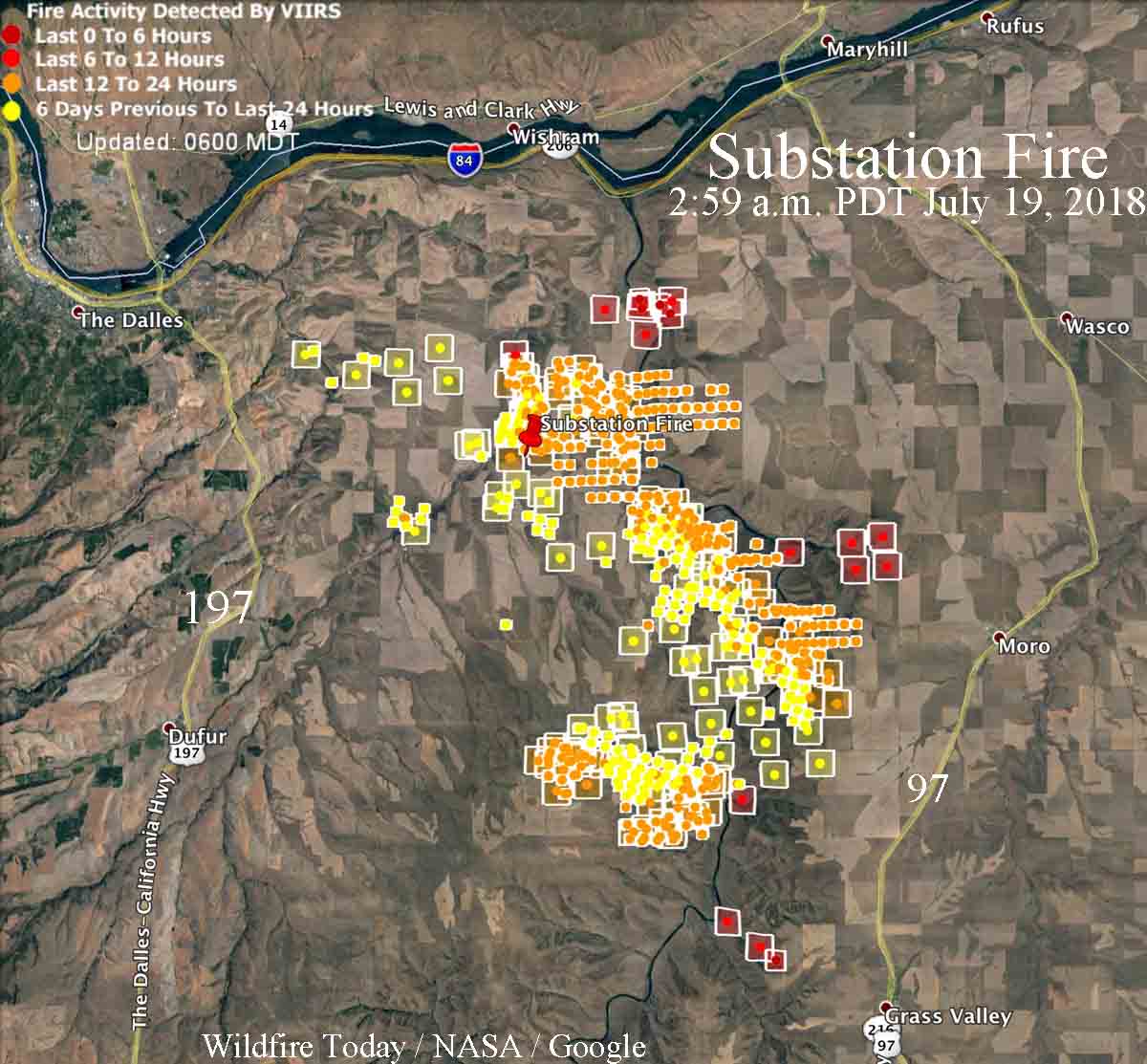
The area is under a Red Flag Warning on Thursday. The forecast for the fire area calls for 78 degrees, 25 percent relative humidity, and afternoon winds out of the northwest of 19 gusting to 27 — not good news for firefighters.
#RedFlagWarning Thursday for strong winds & low RH’s in portions of Oregon, Washington, and Wyoming. pic.twitter.com/joZ4SkYayC
— Wildfire Today ? (@wildfiretoday) July 19, 2018
A Type 1 Incident Management Team (Schulte) has been assigned to the fire.
One structure has been destroyed, an often photographed historic home.
End of an era: #SubstationFire destroys a historic home. https://t.co/FUs9fsFFhz pic.twitter.com/O4czWdg7nF
— OPB (@OPB) July 19, 2018
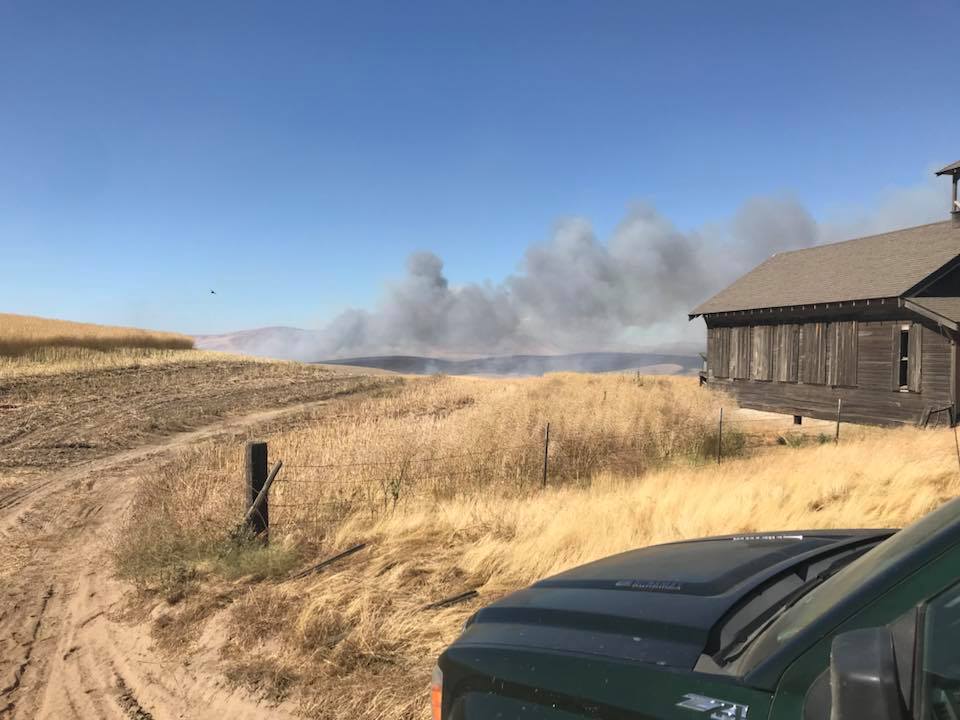
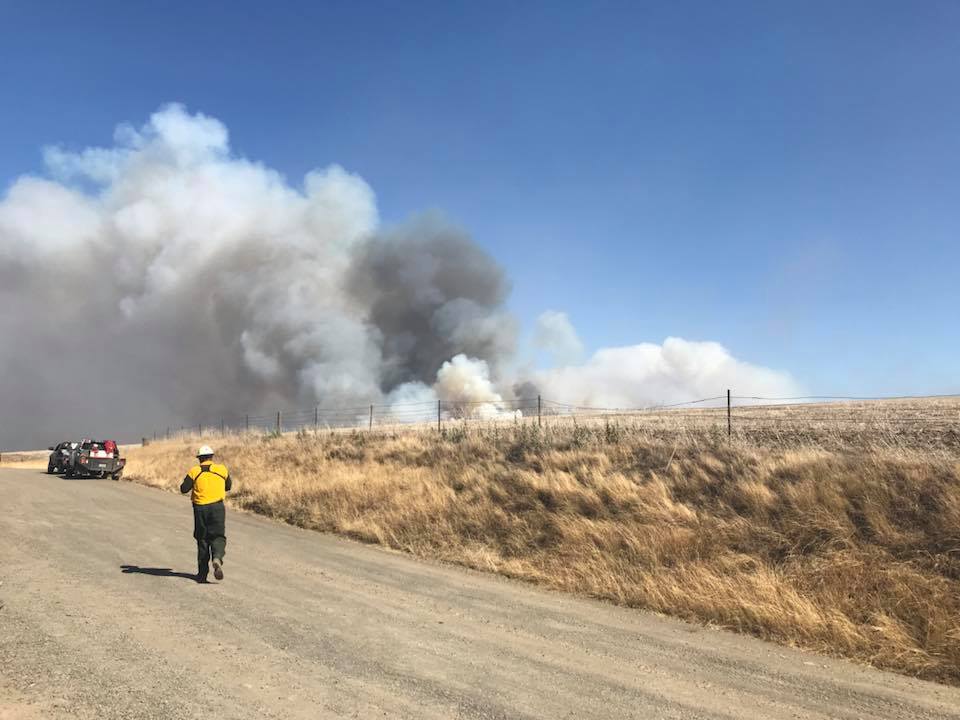
The video below was uploaded by the Incident Management Team to Facebook on July 18, 2018.



